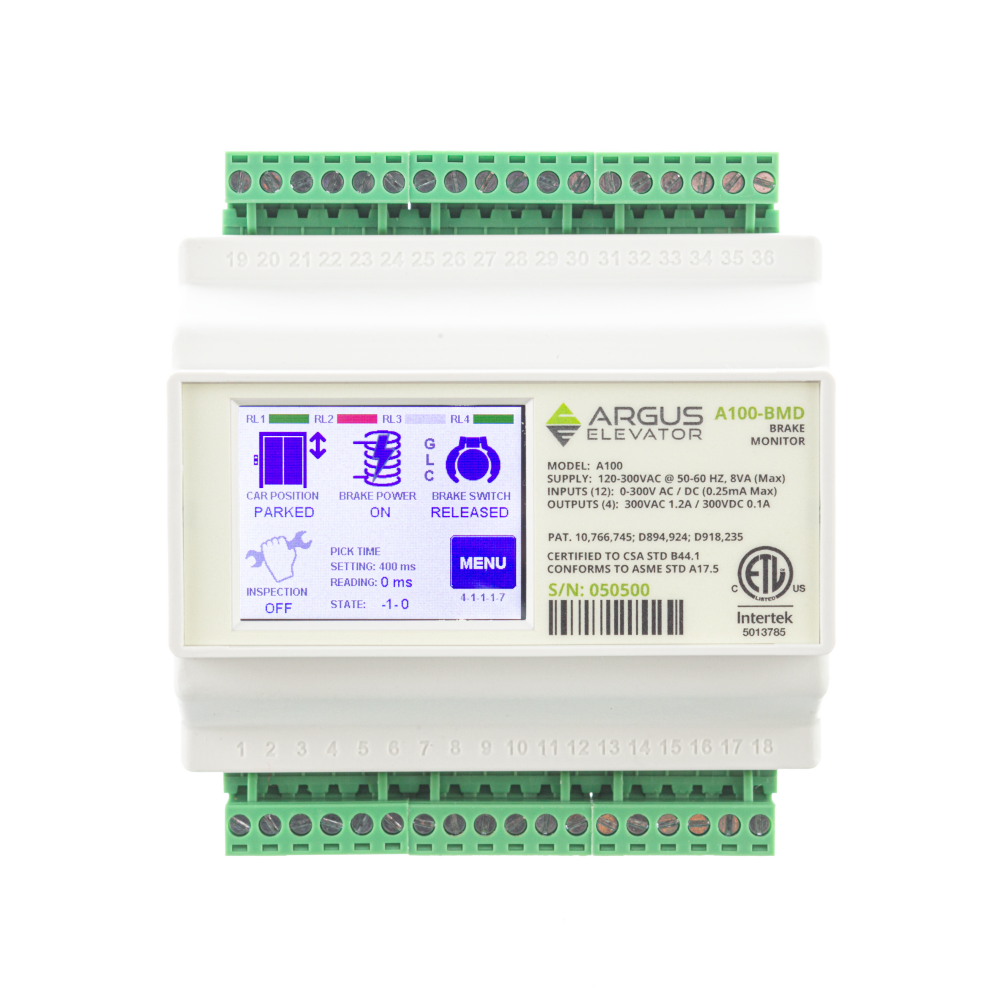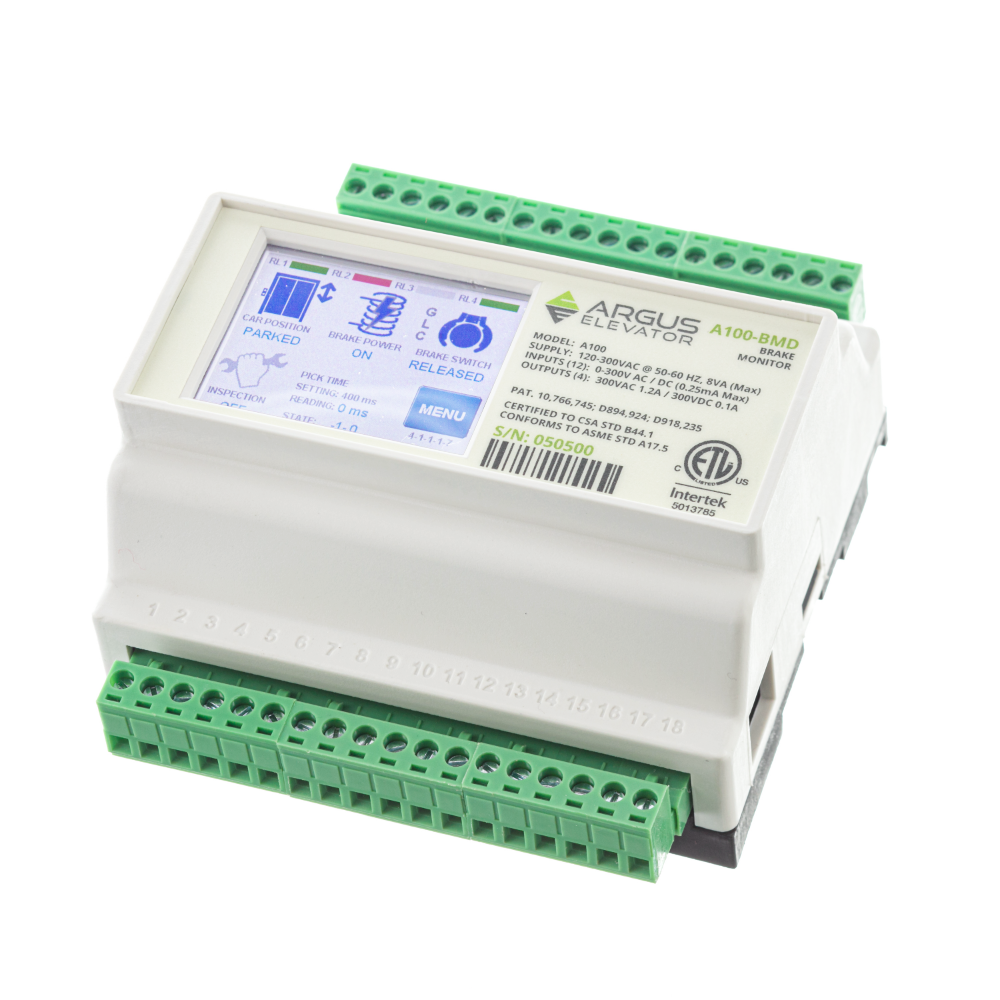Early Detection
The A100-BMD monitors both pick/drop failures and the duration of the pick/drop cycles. Often, before a brake fully fails, it shows early signs, such as sticking or a delayed response. By catching these changes, preventative maintenance can be carried out.
24/7 Continuous Monitoring
The A100-BMD continuously monitors the pick/drop and wear pad switches for signs of necessary brake maintenance, 24 hours a day, 7 days a week. This ongoing detection adds an extra layer of safety between scheduled in-person maintenance visits.
Increase Passenger Safety
A brake that fails to fully engage after leveling or engages while the car is in motion can pose serious safety risks for passengers. By identifying potential brake issues early, these hazardous situations can be prevented.
Prevent Entrapments
Once a fault is detected, the car will finish its current trip, the doors will open, and passengers will be allowed to exit before the elevator is disabled. This process helps prevent entrapments and allows for maintenance to be conducted on a scheduled basis.

Improve safety with early motor brake failure detection
The motor brake is a crucial component of a safe and efficiently functioning elevator. With time and usage, the brake’s parts can wear down or even break. It’s essential to address these straightforward maintenance items before they evolve into significant functional or safety problems.
By monitoring the brake’s switches, the A100-BMD brake monitor detects failures to pick or drop, worn brake pads, open or shorted solenoid coils, and other common brake issues. Early intervention in addressing these problems can help prevent sudden car jerking, drifting after leveling, entrapments, and other safety hazards.


